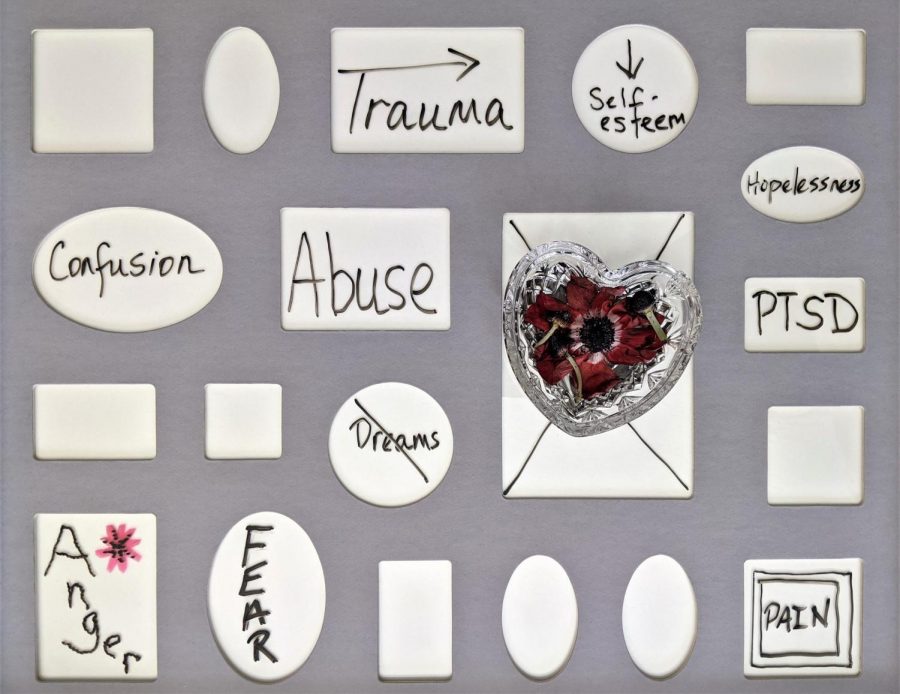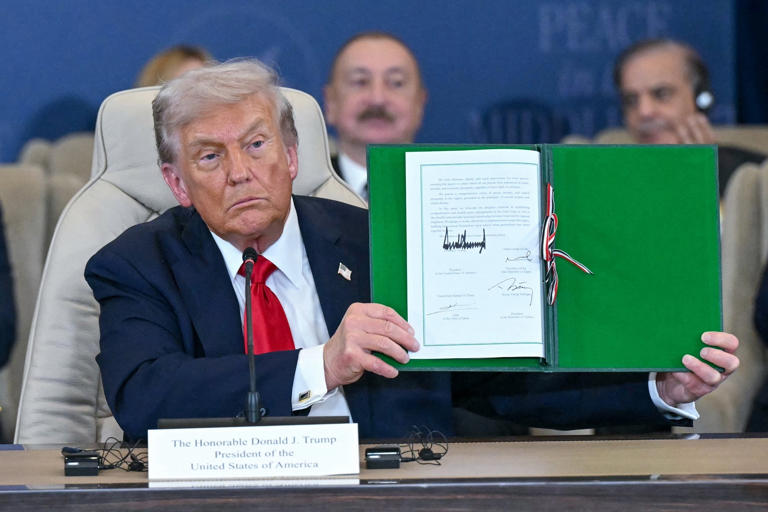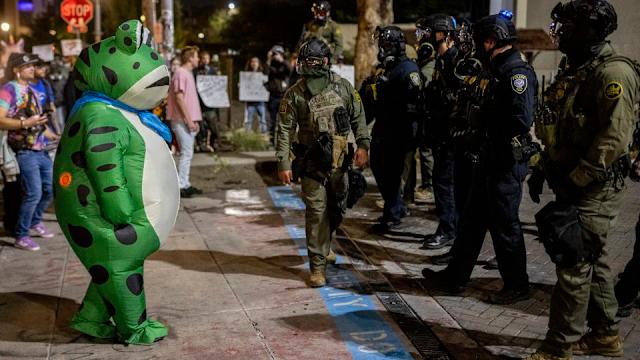Observing Domestic Violence Awareness Month
Reframing its definition is essential in a complete understanding
October 26, 2021
October is Domestic Violence Awareness Month — and there is so much more to domestic violence and abuse than meets the eye.
Especially in the college environment, domestic violence and abuse are more common than it may seem, Michael Madonia, a counselor at Gannon University, said.
“It happens more than we want to acknowledge and more than we want to admit,” Madonia said. “If research shows us that one in four are victimized, the reality is the number is probably higher, which is alarming.”
Common misogynistic and toxic messages surrounding sex often feed into this type of behavior in relationships and domestic situations, Noah Guanzon, a sophomore nursing major, said.
“I think in college there’s just the idea that the college experience revolves around having sex with as many people as possible,” Guanzon said. “This idea can start to characterize men and women as objects to be used and disposed of.”
Madonia also emphasized the fact that changing the language that is acceptable to use is one of the first steps in solving the problem.
“It raises our awareness and forces us to change our behavior and think about why we might use certain language,” Madonia said. “How is it that a piece of the female anatomy has gotten attached to weakness, when in fact that kind of behavior and thinking reflects a value system?”
Lexi Barton, a sophomore occupational therapy major, said that oftentimes, women put up with domestic abuse in pursuit of romance and love.
“We are at the age where we all want to find ‘the one,’ so people often put up with abuse from their partners to keep a relationship they desire, even if it is not a healthy one,” Barton said.
Especially in the college setting, sexual assault often goes along with domestic abuse.
“Often, where there is domestic abuse, there is sexual assault and vice versa,” Barton said. “In a lot of relationships, the abuser takes their anger out using violence domestically and sexually and uses them hand-in-hand against their partner.”
When it comes to domestic abuse in relation to sexual assault, Madonia said that it occurs on a continuum.
“People can be victims in a relationship where their relationship is being controlled, which is different than being physically injured, but sexual assault is a form of violence,” Madonia said. “It’s not a sexual act, it’s an act of power and control. They’re very overlapping.”
It is important to distinguish the differences between domestic abuse and sexual assault, Madonia said.
“Someone can be a victim of domestic violence and not necessarily sexual assault, but if you are a victim of sexual assault, that’s certainly interpersonal violence, and if it’s in the context of a relationship, that would also constitute domestic violence,” Madonia said. “You can be sexually assaulted by someone you don’t know, so technically speaking, that’s not domestic violence because it’s not in the context of a relationship.”
However, while many cases of domestic abuse involve physical abuse, it also includes emotional, verbal, psychological, mental and financial abuse.
“A person can hurt their partner in more than one way, and I think it’s important to acknowledge that people can experience all or just one of these types of abuse,” Barton said. “Recognizing that domestic abuse is more than just physical abuse will give victims the courage to get the help they need and know that what their partner is doing is wrong.”
It is important to expand the common definition of domestic abuse beyond just physical abuse, Madonia said.
“Controlling behavior can devolve into physically violent behavior,” Madonia said. “We as men need to rethink what it means to be in a relationship and what it means to negotiate our own insecurities, and to address our own need to be in control.”
Madonia also emphasized the importance of realizing that signs of abuse often are not visible in the beginning of a relationship.
“No one goes into a relationship thinking ‘This guy is going to hit me,’” Madonia said. “People go into relationships expecting good things to happen, and men who are controlling and perpetrators of dating and domestic violence don’t show that behavior early in the relationship.”
Anthony Sinito, a sophomore physical therapy major, also said there is a certain expectation for relationships within the college environment.
“There is definitely a level of pressure into conformity present that can be associated with unhealthy relationships,” Sinito said.
Guanzon also said that a lot of domestic violence cases arise from a desire for men to exert what they think is masculine power and strength.
“Men can use their strength to protect others rather than express how ‘manly’ they are by trying to impress their friends,” Guanzon said, “If men expressed their feelings and views about certain issues, it can show the importance of something and that there really is a major problem.”
Madonia said that men need to consider what it truly means to be a strong man.
“When the answer to that question doesn’t include some sort of power over women, then I think that’s when we’ll really advance,” Madonia said.
Sinito also said that men can use strength in defense of women and in disapproval of domestic violence.
“I think strength and respect are one and the same,” Sinito said. “Men are biologically more aggressive and prone to violence, and commit far more violent crimes than women. At the same time, men can be a great counter to that.”
However, Guanzon also said that while women are affected by domestic violence the most, there is not enough light shed on the men who experience this issue.
Sinito also said it is important for men to offer solidarity for women in cases of domestic violence.
“It is very important for men to understand women’s perspective as it is not so much a matter of ‘knowing both sides’ but more of a matter of insight into how it can destroy a woman mentally, which adds an empathetic response that would make more men act in defense of women,” Sinito said.
One way that men can do this is by discouraging misogynistic behavior and language, especially among their friends.
“If you’re with your friends and someone says something really out of pocket, make sure it is clear to the person that you’re not cool with that,” Sinito said. “If men hear someone saying something that is a red flag, shut it down quickly. If nothing else, it establishes that if you were to find out they did something, they would have opposition.”
However, historically, the burden has been put on women to address the problem of domestic abuse, Madonia said. From a young age, women are taught that they need to protect themselves, and while that may be reasonable, it is not the solution to the problem.
“I think the solution to the problem, by and large, falls on the shoulders of men to be more responsible, more respectful and more informed about what it means to have a healthy relationship,” Madonia said. “We as men need to look at our own internalized sense of sexism that we carry, and we need to begin by looking inside at our own beliefs and formative life lessons that perpetuate sexist behavior.”
Many cultures, societies and religions are founded on a patriarchy, which can be harmful in the context of domestic violence.
“It’s that patriarchy that’s kind of the cultural underpinnings of the problem,” Madonia said. “We need to continue to push for equality in our communities, our country and the social structures that we all operate in.”
Barton also said it is important to look out for warning signs that may indicate the presence of an abusive relationship.
“Making sure the people you love get the help they need will get their voices out and will ensure that the person who did this to them can be prosecuted,” Barton said. “Another way would be by using their voices and encouraging victims to use theirs to speak up, so it will be made a topic of discussion and hopefully discourage others from doing these things.”
Talking about domestic abuse, especially on college campuses, is important to not only educate victims, but to discourage abusers or potential abusers.
“People need to discuss it to encourage others to stand up and make abusers feel uncomfortable knowing that what they are doing is being stood up against,” Barton said.
People also need to be able to receive easily accessible education and resources about domestic abuse. By doing this, victims will be better prepared to recognize signs of abuse, and will know where to turn if they find themselves in an abusive relationship.
“From a personal perspective, I had no idea who to turn to when it happened to me, and I am sure that many others have felt this as well,’ Barton said. “There is a lot of gray area that people don’t recognize and in turn, people don’t seek help because they don’t know if what is happening to them is considered abuse.”
While resources are almost infinite according to Madonia, they still need to be accessible to all and shared by leaders.
“Men that are in leadership positions need to be most self-aware and most educated and lead the charge as role models for the other men,” Madonia said. “I’m not sure how change happens unless people acknowledge a problem openly and talk about how it exists in all the different nooks and crannies of our community.”
Barton said that it is important for victims to support each other and help each other feel less alone.
“If you must ask yourself if it’s abuse, it probably is,” Barton said. “As a whole gender, I am hopeful that we all come together and find the strength we need to stand up to our abusers and do what is best for us.”
ANNA MALESIEWSKI






